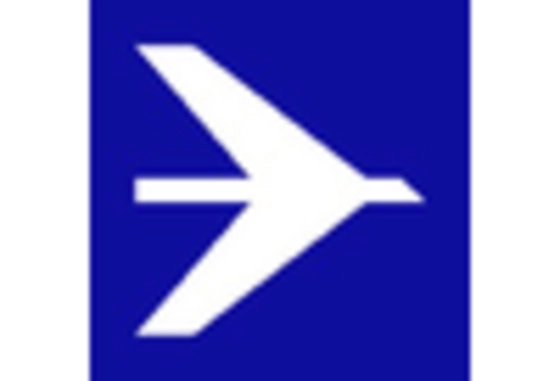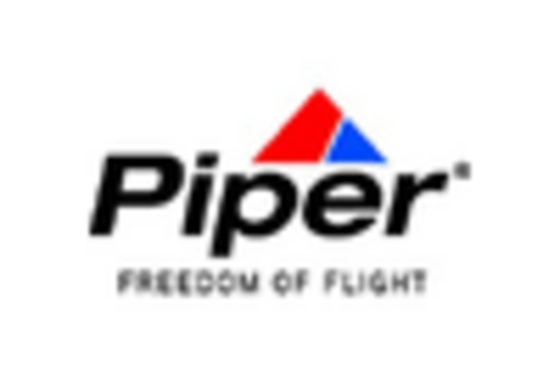Rising Affluence and Business Travel
The increasing affluence of individuals and the growth of business travel are significant drivers for the Very Light Jet Market. As more individuals attain higher income levels, the demand for private aviation services is expected to rise. Business travelers, in particular, are seeking more efficient and flexible travel options to accommodate their busy schedules. The ability to travel on-demand and access remote locations is becoming a priority for many companies. Recent statistics indicate that the business aviation sector is projected to grow, with a notable increase in the number of very light jets being utilized for corporate travel. This trend suggests that the Very Light Jet Market is well-positioned to capitalize on the growing need for private travel solutions.
Increased Demand for Efficient Travel
The Very Light Jet Market is experiencing a notable surge in demand for efficient travel solutions. As business and leisure travelers seek to minimize travel time, the appeal of very light jets, which offer shorter runway requirements and lower operational costs, becomes increasingly evident. According to recent data, the market for very light jets is projected to grow at a compound annual growth rate of approximately 5.5% over the next several years. This growth is driven by the need for more flexible travel options that can accommodate the busy schedules of executives and affluent individuals. The ability of very light jets to access smaller airports further enhances their attractiveness, allowing for direct flights to less accessible destinations. Consequently, this trend is likely to bolster the Very Light Jet Market, as more consumers recognize the benefits of private aviation.
Technological Innovations in Aviation
Technological advancements play a pivotal role in shaping the Very Light Jet Market. Innovations in avionics, materials, and engine efficiency are enhancing the performance and safety of very light jets. For instance, the integration of advanced navigation systems and improved fuel efficiency technologies is making these aircraft more appealing to potential buyers. The introduction of composite materials has also contributed to weight reduction, thereby increasing fuel efficiency and range. As manufacturers continue to invest in research and development, the market is likely to see the emergence of new models that incorporate cutting-edge technology. This focus on innovation not only attracts new customers but also encourages existing owners to upgrade their fleets, thereby stimulating growth within the Very Light Jet Market.
Regulatory Support for General Aviation
The regulatory environment surrounding the Very Light Jet Market is becoming increasingly favorable. Governments are recognizing the economic benefits of general aviation and are implementing policies that support its growth. For example, streamlined certification processes and reduced fees for very light jets are encouraging manufacturers to bring new models to market. Additionally, initiatives aimed at improving airport infrastructure are facilitating better access for these aircraft. As regulations evolve to support the unique characteristics of very light jets, the market is likely to expand. This supportive regulatory framework not only enhances the attractiveness of very light jets for potential buyers but also fosters a more competitive landscape among manufacturers, ultimately benefiting the Very Light Jet Market.
Environmental Considerations and Sustainable Aviation
Environmental concerns are increasingly influencing consumer choices within the Very Light Jet Market. As awareness of climate change and sustainability grows, there is a rising demand for more environmentally friendly aviation options. Manufacturers are responding by developing very light jets that utilize advanced fuel-efficient technologies and alternative fuels. This shift not only addresses consumer preferences but also aligns with broader industry goals to reduce carbon emissions. The potential for very light jets to operate with lower environmental impact is likely to attract a new segment of eco-conscious buyers. As sustainability becomes a key consideration in purchasing decisions, the Very Light Jet Market may see a transformation in its customer base, with an emphasis on greener aviation solutions.

















Leave a Comment